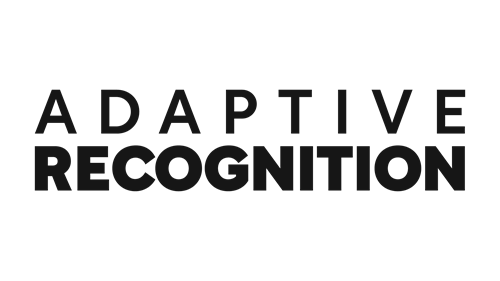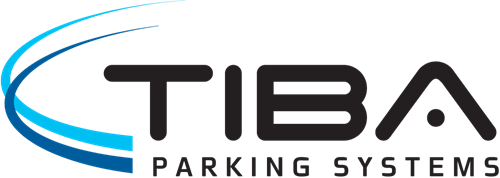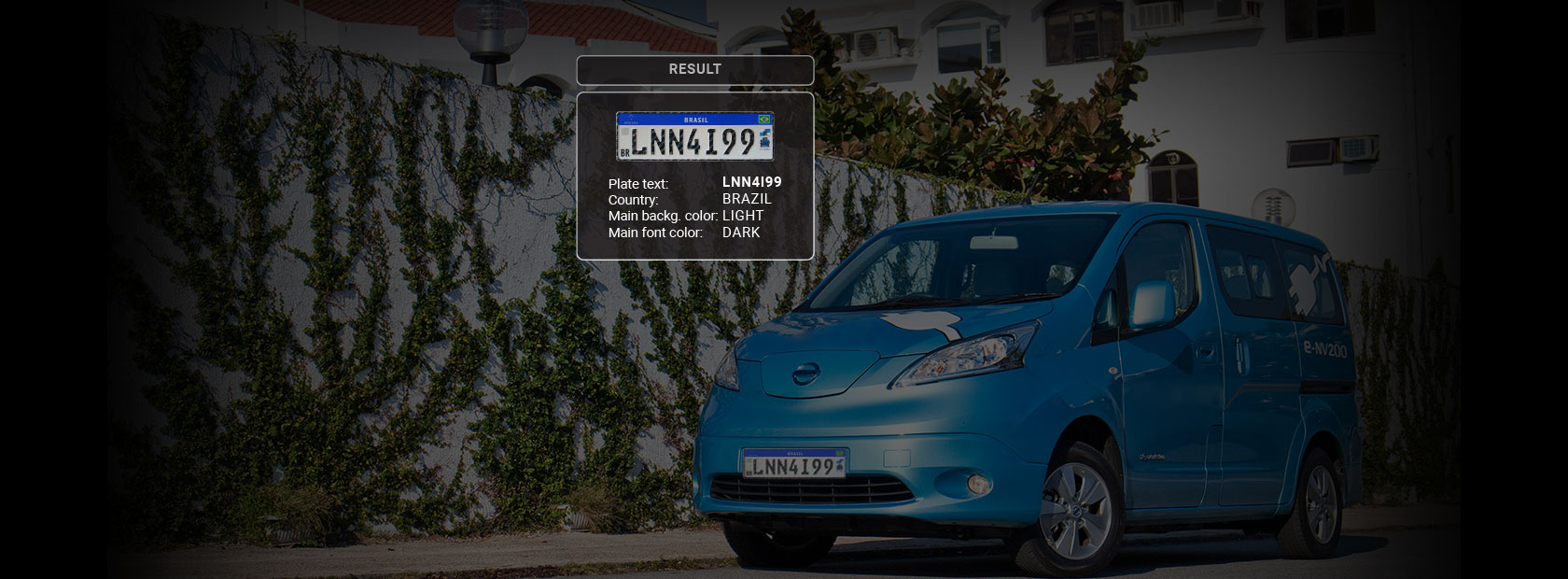
Vehicle owners know how hard it is to find an empty spot to put down the car. It’s a constant battle with delivery vans, shared vehicles, and, recently, outdoor establishments. As such, the need for smart curb management is on the rise. Thankfully, there are many solutions ready to be implemented—including those relying on ANPR.
Driving through a city and avoiding traffic is one thing; parking, however, is an entirely different story. Finding a curb space to put down your car has never been easy, but nowadays, we wouldn’t be surprised if you felt like Indiana Jones looking for a lost treasure in a maze. Parking spaces are constantly occupied by non-residents, delivery companies, vehicles of sharing services, EV chargers, and, lately, outdoor restaurants.
However, what if we say that there is a solution that allows everyone to have their cake and eat it? A solution that doesn’t require closing off city centers from anyone but pedestrians. A system that cleverly uses the technology behind license plate recognition for a noble and green purpose: smart curb management.
Curb Wars: The Attack of Insufficient Parking Space
There’s no better way of putting it: cities are basically full. More and more people opt for owning a vehicle, meaning that finding appropriate curb space has become more important than ever.
But whereas the suburbs could provide space for the ever-growing flood of vehicles—either with the city expanding or building large parking lots—downtowns and their citizens had to suffer from parking cars taking up all remaining space. In fact, the fight for finding a place to drop off the car has become a daily routine for many. Unfortunately, this also resulted in vehicles parking at curb spaces where they aren’t supposed to be—much to the dismay of residents and law enforcement agencies.
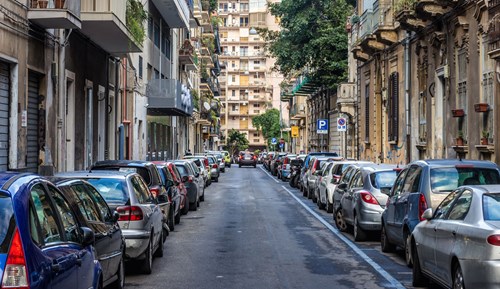
With the arrival of COVID, things really got out of control. People were strongly discouraged from using public transport, giving rise to personal or shared car use. Then there were the curfews that forced citizens to stay home and order groceries online. This resulted in the sudden need for loading zones for delivery vehicles, which had to fight for the few remaining parking spaces with residents’ vehicles.
And although curfews are less common, the effects of COVID are still with us. Business locations, where proper ventilation is out of the question, ‘moved’ to the streets to avoid limiting the number of people they can serve simultaneously. Sidewalks are occupied by vehicles, delivery trucks, businesses like outdoor restaurants, dedicated spaces for car/bike/scooter sharing services, electric vehicle charging points—and the list goes on.
When Smart City Solutions Step In
It’s safe to say that reducing congestion via more effective curb management is a must. And not just for satisfying vehicle owners, pedestrians, and business owners alike, but also for improving the air quality of cities. As such, experts have proposed multiple solutions, the best-known one being the complete prohibition of vehicles entering city centers. However, even if this is indeed the most pedestrian-friendly option, it also heavily limits vehicle owners living inside car-free zones and businesses relying on delivery vehicles.
Santa Monica and Dedicated Zero Emission Loading Zones
This is exactly where smart city solutions can help. For instance, the city of Santa Monica in California, U.S., has recently started a pilot project in cooperation with startup Automotous aiming to create zero-emission loading zones. The project is more sophisticated than the total prohibition of delivery trucks from low-emission or ultra-low-emission zones. It relies on optical character recognition (OCR) with automatic number plate recognition (ANPR) cameras that can read license plates and, additionally, determine the vehicle’s brand and model. Although the project’s purpose is only traffic monitoring at the time of writing, the gathered data already helps Automotous and Santa Monica better understand which parts of the city delivery companies frequent the most and where are the best places to create dedicated delivery drop-on/drop-off points.
However, the project’s long-term goal is to significantly improve curb management not only in Santa Monica but everywhere. The dedicated loading zones clearly set the limits for delivery companies, leaving enough curb space for them and the residents. And by going for the green approach by allowing only electric vehicles (EVs) into these zones, cities can deal with the issue of pollutants emitted by diesel-powered delivery trucks once and for all.
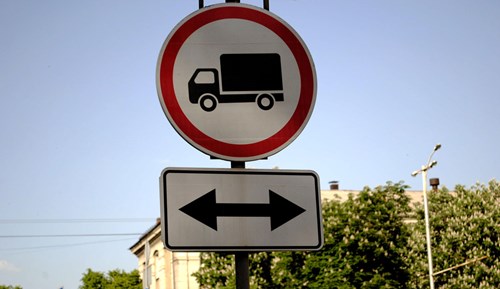
ANPR and MMR: The Brain Behind Smart Curb Management
Although the Santa Monica solution seems futuristic and is indeed a great way of dealing with a long-existing urban issue, the ANPR technology behind it has been around for quite a while. In fact, it’s exactly what Adaptive Recognition, a leader in the OCR industry, is good at: providing solutions for cities with curb management issues via ANPR and more.
To give you an idea of how license plate recognition and make and model recognition (MMR) can help in traffic monitoring and curb management, let’s return to Santa Monica’s zero-emission loading zones for a moment. After completing the initial phase, the system will be capable of performing two tasks: capturing license plates and recognizing vehicles. The former can permit residents only into certain parts of the city, while the latter is to check whether the delivery truck approaching the loading zone is indeed an EV. From the moment the camera captures the license plate, and the accompanying ANPR software determines the vehicle’s make and model, it’s up to the system’s operator what to do with drivers who aren’t on the allowlist.
What Adaptive Recognition Puts on the Curb Management Table
So far, these are things Adaptive Recognition’s solutions like the Carmen® ANPR Image software library and the MMR software add-on can easily replicate. What makes us different, however, is that our company also produces ANPR cameras such as Einar, intended for parking access control and slow traffic monitoring purposes. This means that combining these three products could be the base of a curb management system that isn’t just similar to the one used by Santa Monica but may even be superior to that.
The key to achieving that is Einar. A Plug & Play camera with economic PoE+ powering and the option to automatically control barriers via its GPIO port, Einar is fine-tuned for ANPR processes from the get-go.
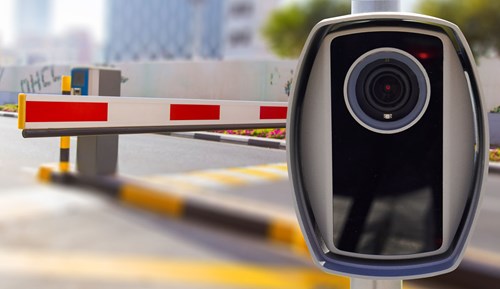
It has built-in illuminators, allowing it to capture images—and videos—in all light conditions. It also features multiple ways of triggering, such as motion, time of the day, or monitoring area. The camera can also categorize events based on the object triggering the device, allowing users to focus on what they want to monitor.
However, the most significant advantage of Einar is that it can be linked to Carmen® ANPR Cloud, Adaptive Recognition’s cloud-based SaaS ANPR software. This allows Einar to capture images and videos and provide valuable license plate information, uniting two elements of the Santa Monica system—an ANPR software and a traffic monitoring camera—in one single device. And lastly, there is the option to try our solution by registering for a free trial containing 1000 events, after which you can choose from a variety of monthly subscriptions—including ANPR readings from 10,000 up to millions per month—that best fits your project’s needs.
About Adaptive Recognition
_logo.jpg) Adaptive Recognition is a group of creative minds, developing and manufacturing AI-based image processing technology, for the traffic, security, and identity industries.
Adaptive Recognition is a group of creative minds, developing and manufacturing AI-based image processing technology, for the traffic, security, and identity industries.
Adaptive Recognition's first major success came with our globally market-leading Carmen® ANPR (Automatic Number Plate Recognition) product, which is capable of automatically recognizing and reading images of car license plates. This was followed by introducing various standardized codes, which are used, among other things, in shipping or printed on ID documents like passports.
The small startup transformed into a professional international company with locations in Denmark, the USA, Asia-Pacific, Central Europe, and Singapore, with 300+ employees and 30+ representative partners worldwide.

